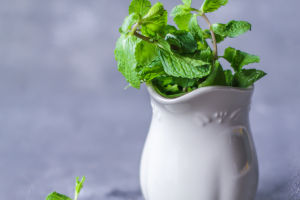In summer, it's soothing to stroll under a garden patio trellis to enjoy the bright flowers and green grass and enjoy the cool breeze.
But hot summer is most likely to get the plants sick, and we may also be troubled by the care difficulties of garden plants.
When the temperature is high in summer, the metabolism of plants and trees becomes unstable.
The water in the plant loses balance and eventually the plant becomes wilted.
Several things need to be noted:
1. Pay attention to temperature and light.
Temperature is an important condition for the survival of various flowers. In summer, flowers are best placed in the shade. Most flowers and plants avoid direct sunlight, so they can be placed in the shade.
We also need to pay attention to watering with proper shade from the sun and maintaining ventilation.
A few ways to improve ventilation:
a.If you can use soil cover cultivation can make the plant roots moister and cooler to ensure a safe passage through the summer.
b.To make the water penetrate into the deep soil better and faster, you can loosen the soil for plants and trees before watering.
c. To improve water absorption by plant roots, the amount of water received can be increased.
2. Moderate watering.
In summer, water evaporates faster, so watering in time, at least once a day on sunny days, preferably in the morning, and also in the evening, but not at noon.
a.If you find out that the plant has appeared bad, you cannot water a lot of water at once, otherwise, the plant will rot.
The best way is to start with less and then more. (Water a small amount first, then water to reach evenness, to allow the soil to gradually return to its normal structure.)
b.Before watering, you can use micro-spray or drip irrigation, so that watering is not only evenly watered, but also facilitates plant absorption, which is very beneficial to plant growth.
c.You can spray a fine mist around the plants to increase air humidity, lower the temperature and ensure plant safety.
3. Control pests and diseases, once occur this situation, you can use the plant insecticide spray, or repeatedly rinse with water can be removed from the treatment. The insects can be removed with a brush.
The benefits of planting :
1. Purify the air
Raising flowers can purify the air and improve the air environment. Flowers can absorb formaldehyde, benzene, sulfur dioxide, carbon monoxide and other harmful substances in the air, and convert harmful substances into harmless substances to improve and purify indoor air.
2. Adjust the air humidity
Flowers and plants can regulate indoor air humidity, which is good for human health.
It can adjust the humidity of indoor air, which is beneficial to human health. Especially in winter, when the indoor humidity is low, it can effectively improve indoor humidity and relieve dryness.
3. Absorb dust
Flowers can absorb dust in the air and reduce dust content. The leaves of some plants can intercept and absorb dust in the air, reducing dust and improving the indoor environment.
4. Sterilization and disinfection
Many plants can inhibit and kill bacteria and fungi and can reduce the reproduction of bacteria.
5. Release oxygen and increase negative ions
Flowers can absorb carbon dioxide and release oxygen through photosynthesis. Most plants absorb carbon dioxide and release oxygen during the day, while some plants absorb carbon dioxide and release oxygen at night.
6. Soothe mood and help sleep
The scent of some plants can relieve tension, relieve anxiety, calm the mind and help sleep.
7. Cooling and radiation protection
Flowers can regulate temperature and reduce radiation. Plant climbers, wisteria, incense vines, ivy, and other climbing plants on balconies and windowsills to form a natural green barrier, which can reduce noise and absorb sunlight.


